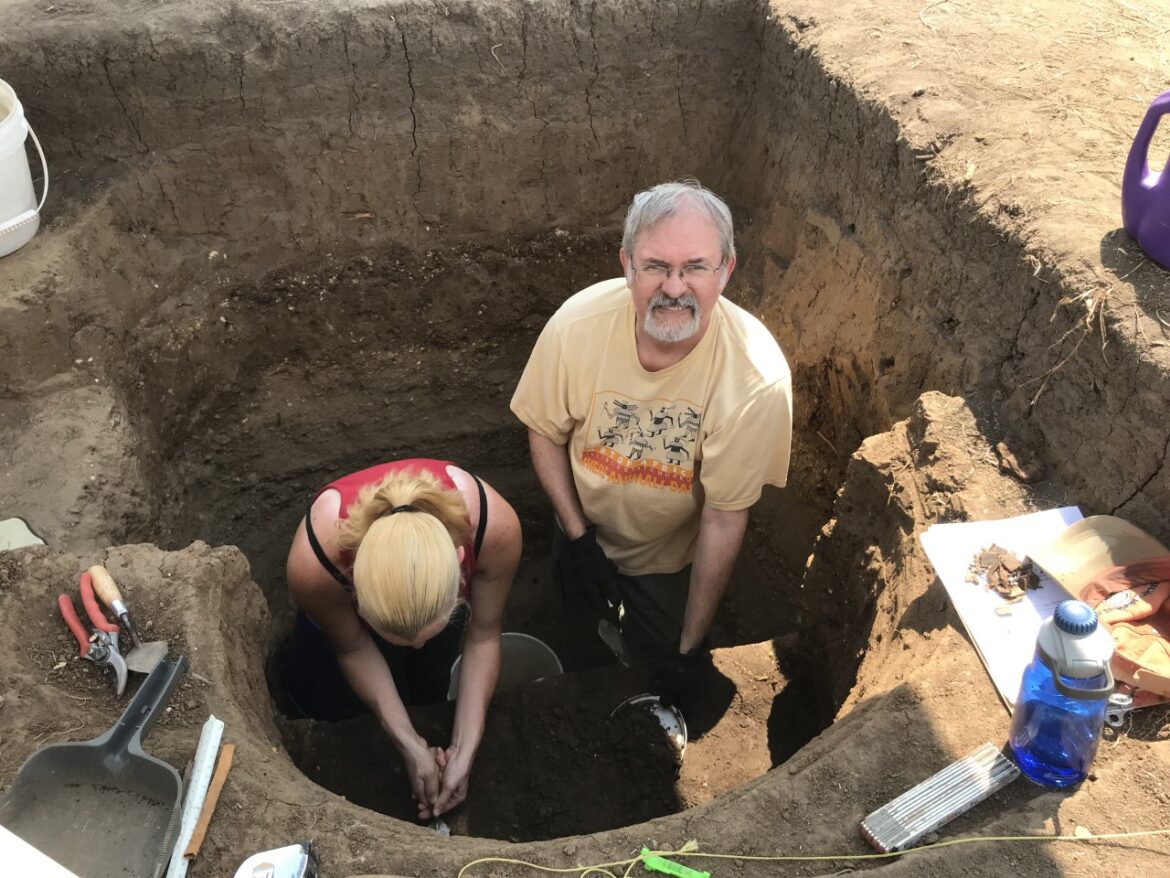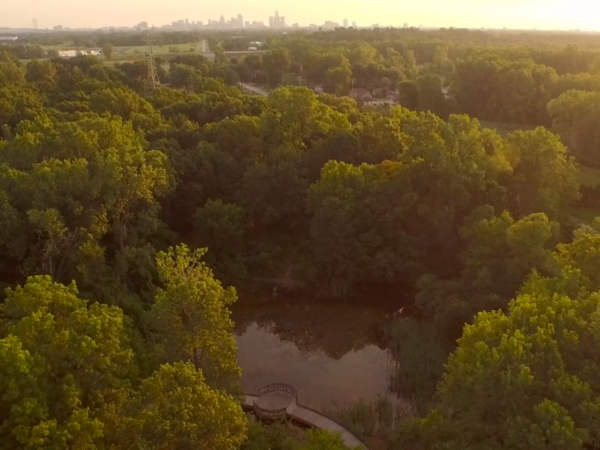
This article was republished here with permission from Great Lakes Echo.
By Hannah Brock, Great Lakes Echo
Researchers are studying a long-vanished village near southern Lake Michigan that a World War II arsenal helped preserve.
A recent study by archaeologists sought to learn about those who lived at what is now the Midewin National Tallgrass Prairie in Illinois. That’s about 60 miles southwest of Chicago.
It’s a kind of site known as protohistoric — the gray area between prehistoric, meaning no written records, and historic, which means there are written records, said Madeleine McLeester, an environmental archaeologist and researcher on the study.
Early 17th century records paint a picture of what was happening in some parts of the world, but not others, said Mark Schurr, an anthropological archaeologist and researcher who also worked on the project.
Records show how Europeans were living during the early 17th century, but similar records are limited in the Great Lakes region. That’s why the Huber village at Middle Grant Creek is considered protohistoric.
“So protohistoric is this time period in the middle, where we’re starting to see European goods enter the archeological record in advance of physical Europeans and those historic records,” McLeester said.
The village is one of several Great Lakes Huber sites, a specific, distinctive culture that lived between 1500 to about 1650 and that is identified by its unique pottery.
“We don’t know exactly who their modern descendants are,” Schurr said. “There’s a lot of different ideas. I’m sure they have living descendents we just don’t have a specific group that we can tie them to.”
This Huber village was inhabited during one of the coldest parts of the Little Ice Age, a period where the weather was thought to be cold, damp and unsuitable for agriculture, Schurr said. But this village was agriculturally productive.
“They were somehow actually doubling down on agriculture during what was thought to be a climatically unsuitable era,” Schurr said.
Excavation efforts showed evidence of storage pits, pointing to bountiful crops with enough produce to save for the winter. McLeester’s other research looking at shells and isotopes at the site show that the climate was indeed cold, but likely dry instead of damp.
“We’re getting a much different picture about what the Little Ice Age looked like in northern Illinois,” Schurr said. “And that’s kind of an interesting (discovery) for climate change. They’re getting this supposedly adverse climate, but they’re adapting to it – not through fleeing or dying out, but by amping up their technology for production.”
The Middle Grant Creek site has more storage capacity than other Huber sites– but Schurr and McLeester aren’t sure why. Each survey of the site brings another excavation and new questions, Schurr said.
Not only were the people at the site storing huge amounts of food after successful crops, but they were also storing it in a unique way.
“They’ve (dug) these storage pits along a sand ridge because this sand ridge had really amazing drainage,” McLeester said. “So they’re storing food underground. They’re packing it with brass and then lining it with brass
The site at Middle Grant Creek in northern Illinois provides a unique excavation opportunity, Schurr said.
During WWII, the area was turned into an arsenal, which prevented development. Once the arsenal was decommissioned, it was turned into a prairie, preserving the site for excavation, unlike many other sites that were destroyed by development.
And excavation clues these researchers into the daily life of the village. Those at Middle Grant Creek traded indirectly with communities in Florida and Canada, which were undergoing colonialism, McLeester said.
This brings up questions about how communication with trading partners about Europeans arriving affected their everyday life, and researchers wonder if diseases had traveled to the region yet, McLeester said.
Another area of interest for archaeologists is population size, which helps them understand social organization, economics, how people make a living and if they’re worried about being attacked, Schurr said.
The village was a pre-contact village, McLeester said. This means Europeans had not colonized it and had not brought the diseases that greatly affected North America’s Indigenous populations.
By using excavations to estimate a population of 150 in the village, they can understand the baseline of villages before diseases brought havoc, Schurr said. There are written accounts estimating populations, but it’s difficult to estimate protohistoric populations because researchers have to make assumptions.
“For example, one question would be how were populations reduced by European diseases? We have accounts of that happening historically,” Schurr said. “But figuring out what the baseline was, what were things like before European diseases, you can only use archaeological evidence for that.”
Other questions, like what tools were used for agriculture and hunting pre-colonialism, can also be answered by the village, Schurr said.
Researchers are interested in wildlife during that period. It can offer insights into the environment, but also what the village ate and even their religious practices, said Terrance Martin, a zooarchaeologist and researcher on the study.
Martin has identified bison, elk, deer, beavers, muskrat and more species at the Huber site, he said.
“These people that are living there, they’re agriculturalists, but they’re hunting bison, they’re hunting animals on the prairie, but they’re also really using that location to go after different aquatic species,” Martin said. “So this was really important for the Midewan wildlife biologists to see what species were there pre-contact and comparing it to modern records.”
The village offers opportunities for fossils of extinct species, like the passenger pigeon. And it gives insights into spirituality, Martin said. Researchers discovered raven and bald eagle wings with a thick layer of burning on them.
“So environmentally, you’re finding (the fossils), but then, in that context, what is this saying about the beliefs or what these animals meant to the people at Middle Grant Creek,” Martin said.
The large excavation site also allows Martin to explore species diversity, like a wide array of turtles that they found, he said.
McLeester and Schurr have been visiting the site since 2016 and produced multiple research papers. Right now, the researchers are assessing the data they have collected and figuring out next steps.
Catch more news at Great Lakes Now:
Proposed eastern sandhill cranes hunt in breeding states stirs controversy
Tribes welcome infusion of money in infrastructure bill
Featured image: Zooarchaeologist Terrance Martin and a volunteer excavate a portion of the Huber site at Middle Grant Creek, Illinois. (Photo Credit: Madeleine McLeester)




